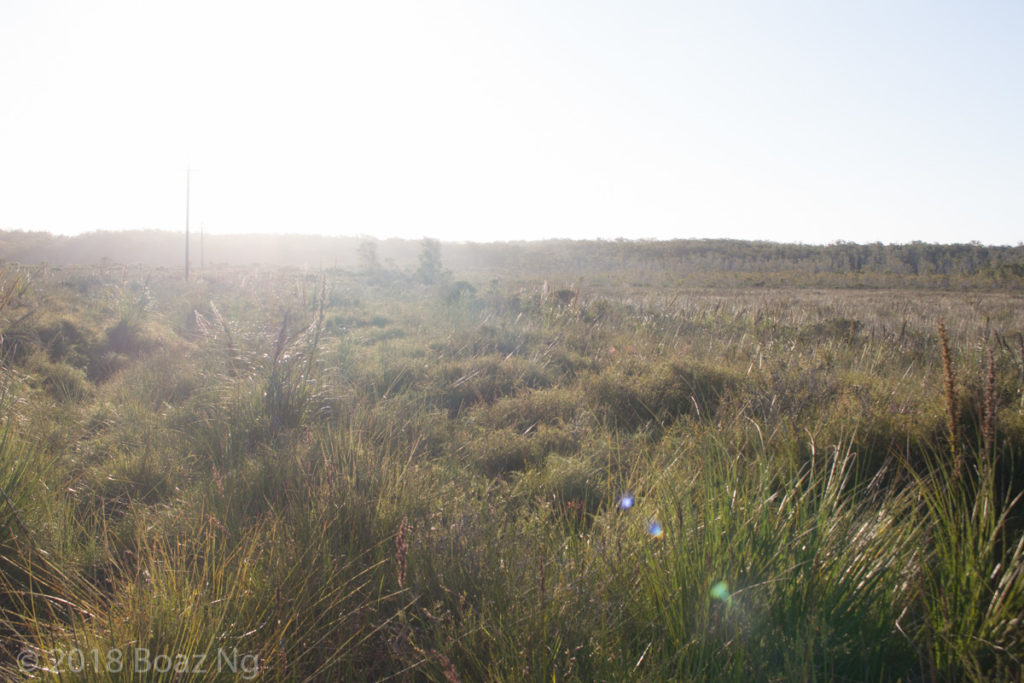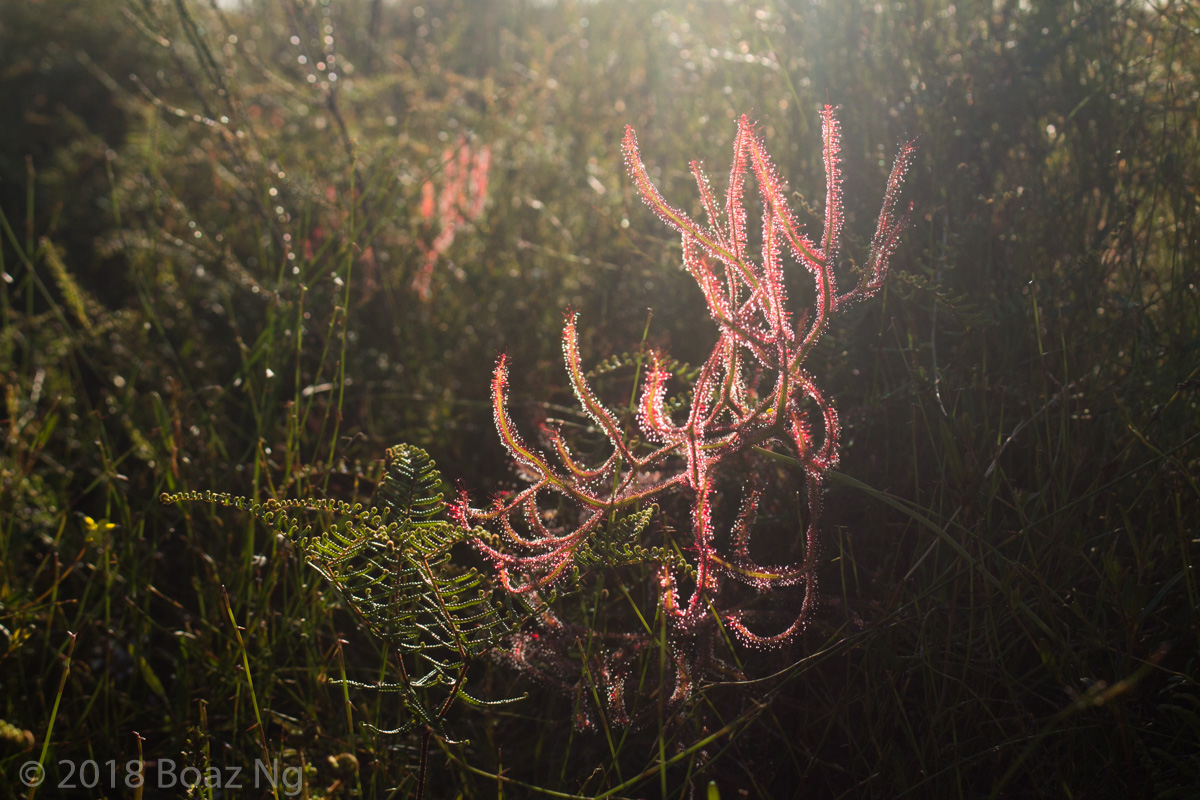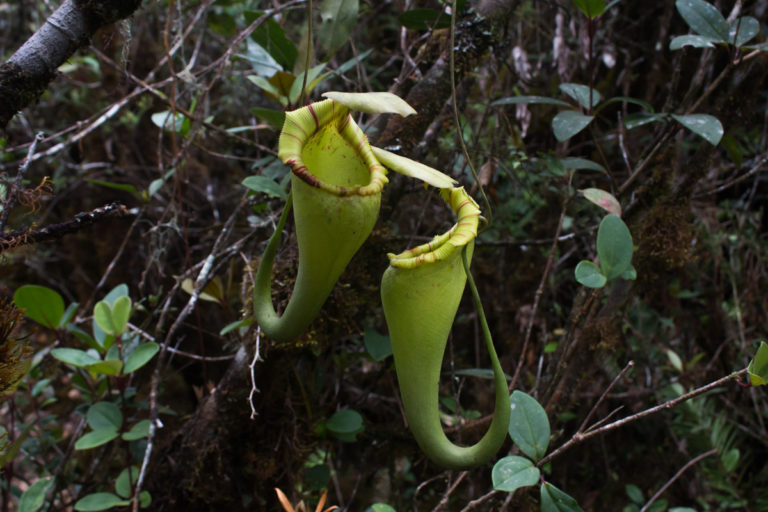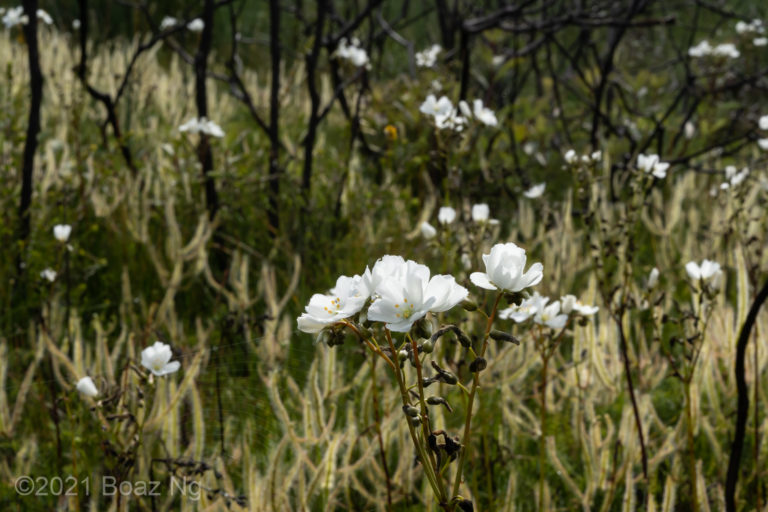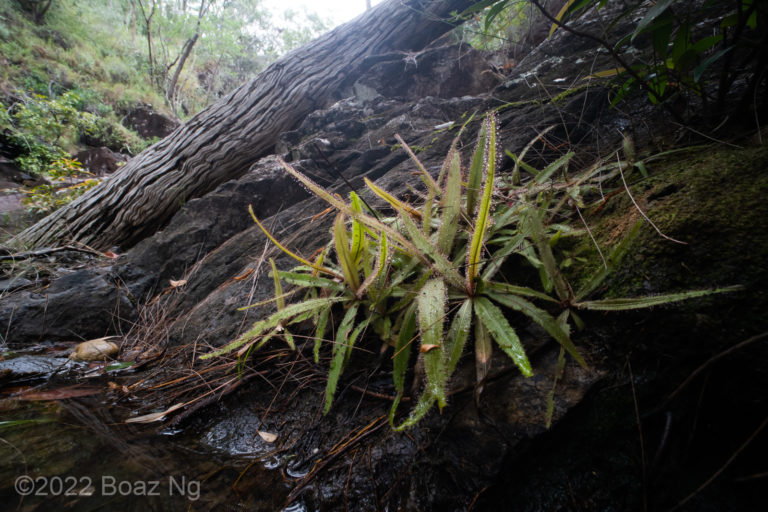Drosera binata is a species complex that displays extreme variation across its range. One particular variety, known in the hobby as Drosera binata var. multifida f. extrema (a long and invalid name) is known for its extreme number of growth leaf points and has captured the imagination of many growers. I was able to locate these fabled plants growing wild in northern New South Wales on the east coast of Australia.
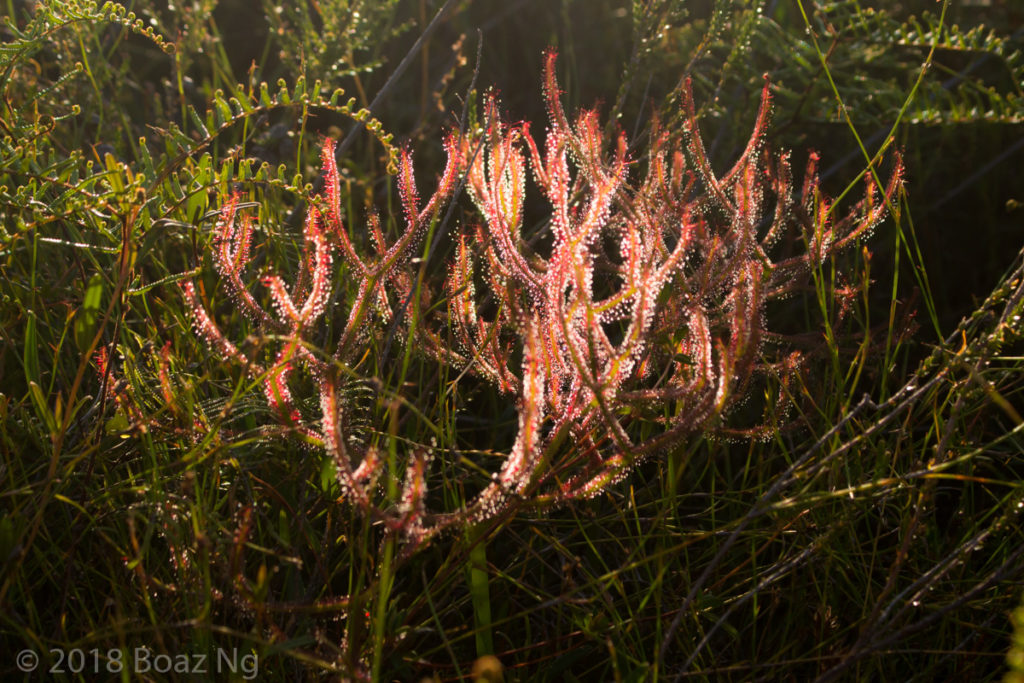
The northern coast of New South Wales is characterised by an extensive network of swamps and creeks that are home to a whole range of Drosera and Utricularia. Whilst the center of these swamps are often stagnant with water and reeds, the slightly sloped edges that drain in and out of these areas provide a niche that is constantly moist and sunny, the ideal habitat for Drosera binata to grow in. Service trails and tracks provide access to some of these normally impenetrable areas.
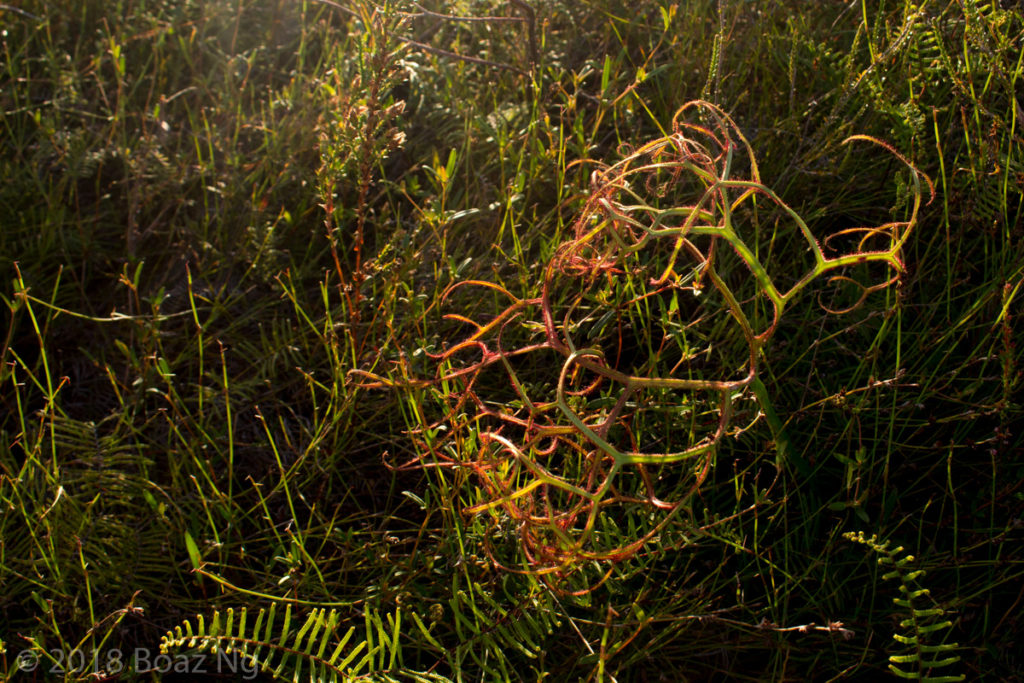
Drosera binata here reach gigantic proportions. Fleshy stems over 1 meter long reach up and through the thick bushes before unfurling their leaves on top of the growth. These leaves can measure over 30 cm in diameter and bifurcate many times. I was able to locate one leaf with 77 points – I believe that this is a new record for the species!
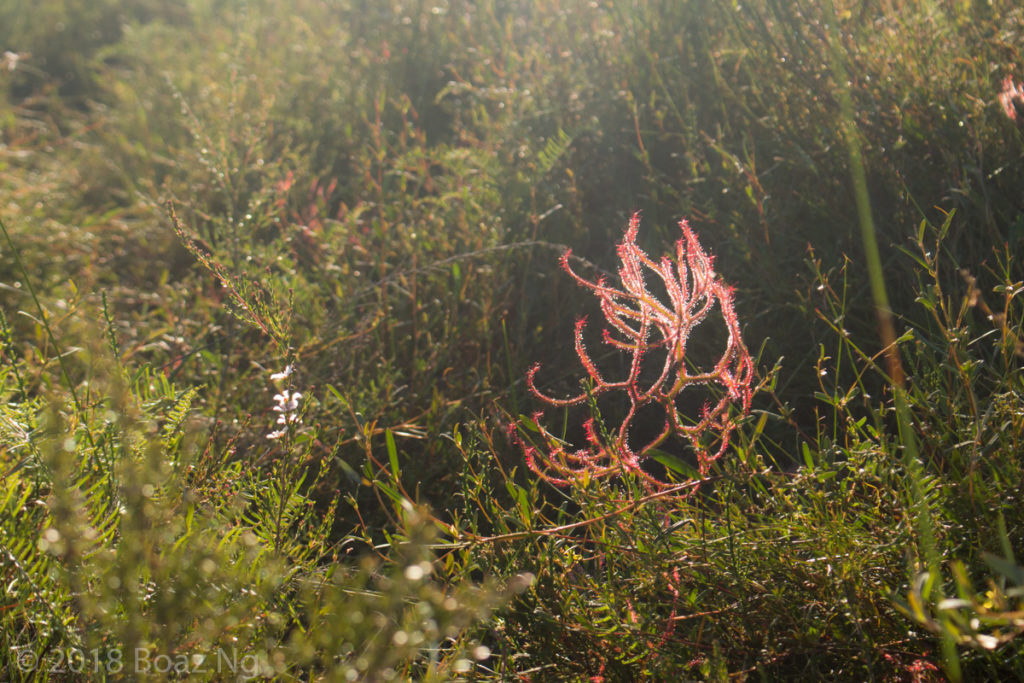
Not all plants in the area reach these extreme proportions. The typical amount of points displayed is around 15-25. Only the largest individuals create leaves that develop over 50 points. As an interesting note, specimens of plants from this area that are available in cultivation do not develop anywhere near the number of points as wild plants. Perhaps a unique combination of environment, age and health are required for the plants to display gigantic phenotypes.
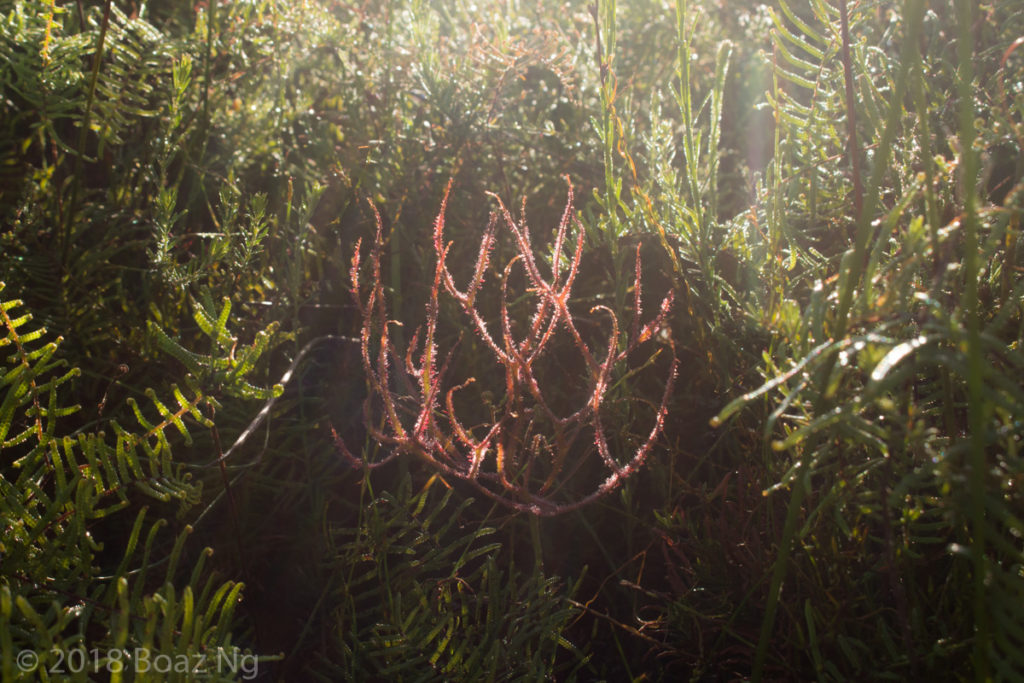
These swamps are unique environments that are home to many amazing flora and fauna. Whilst most are protected in the boundaries of national parks, many are on private property or border urbanised developments. These swamps are particularly vulnerable to destruction as they are natural drainage basins and readily collect urban/agricultural run-off.
